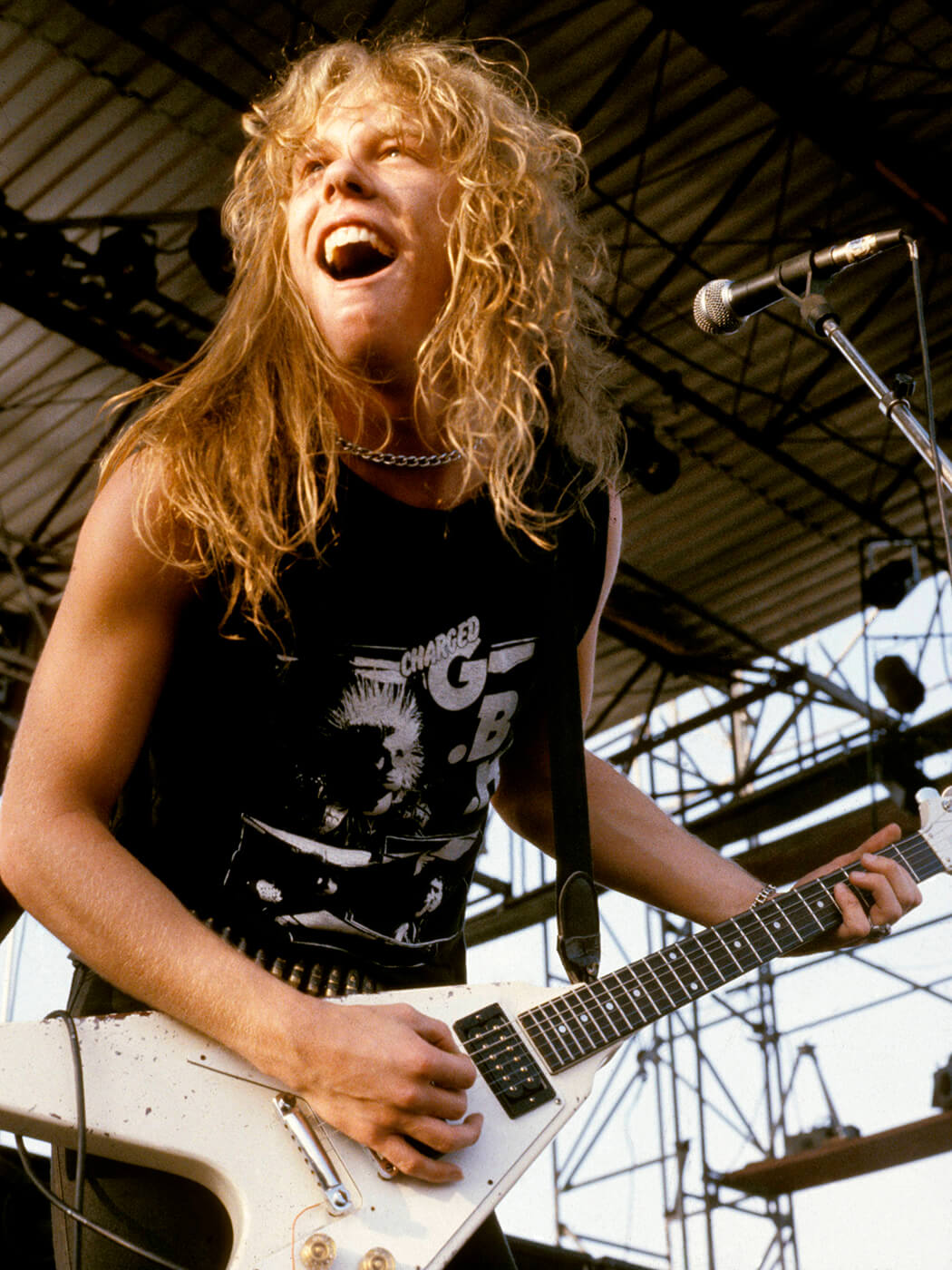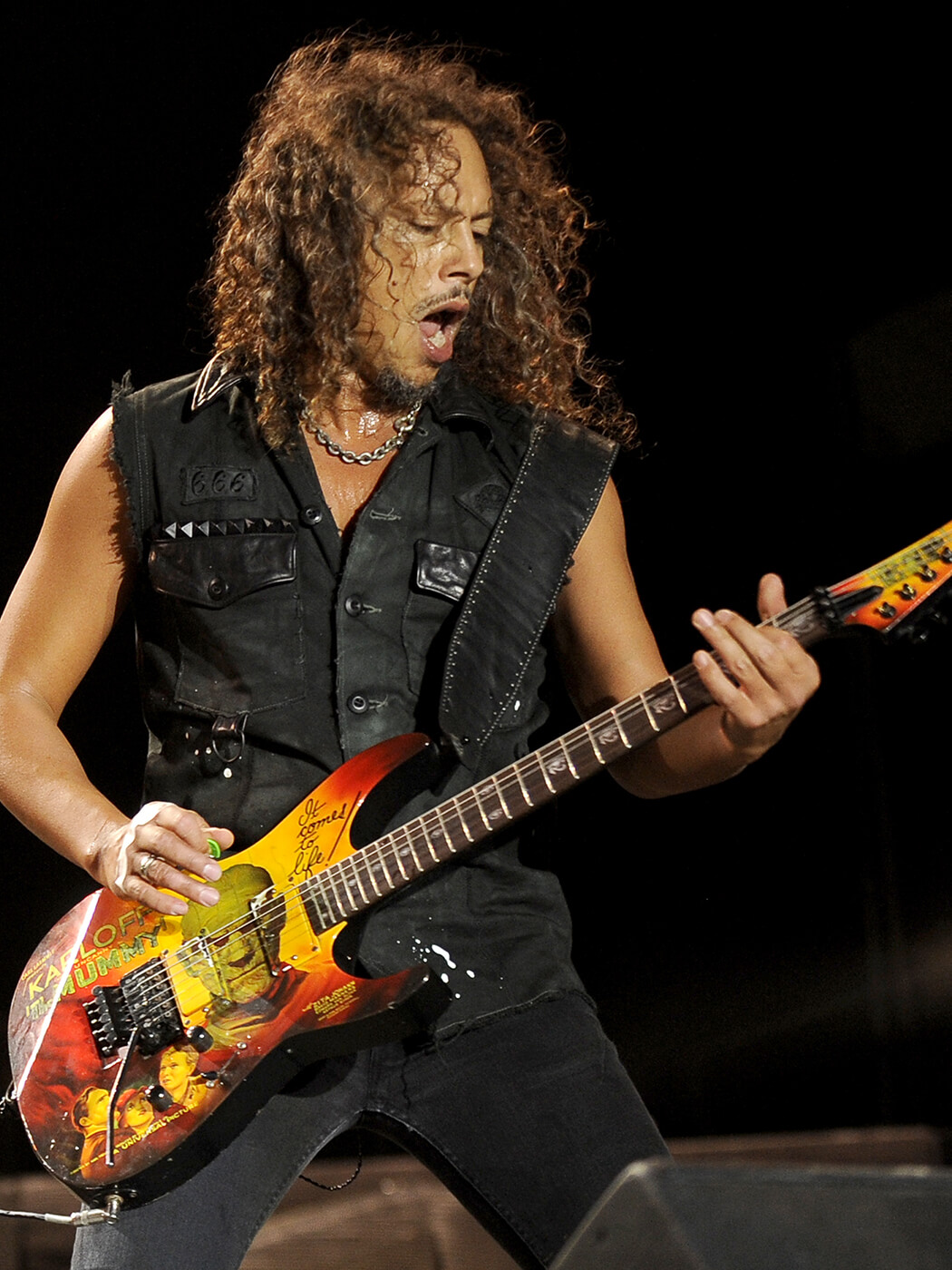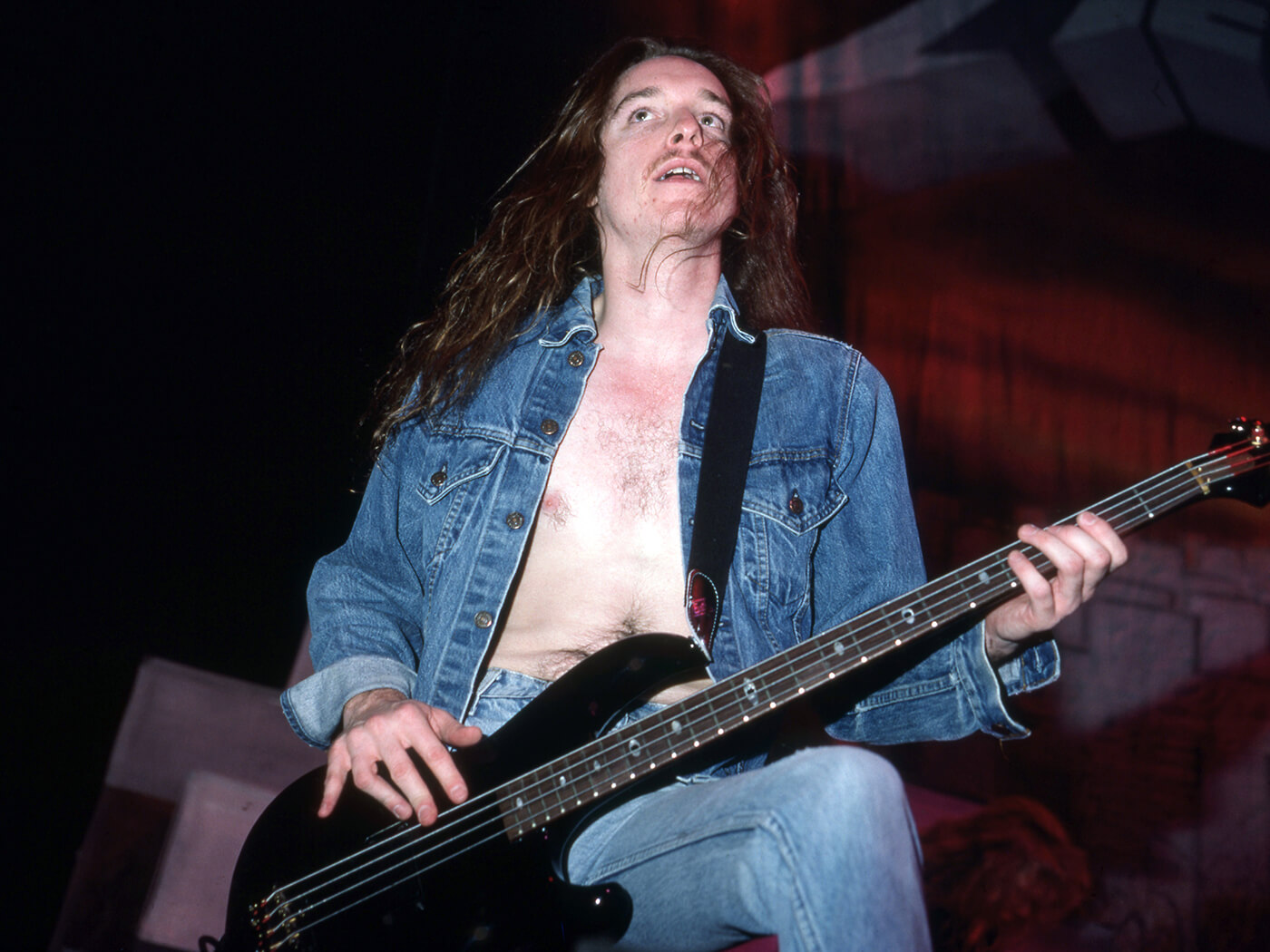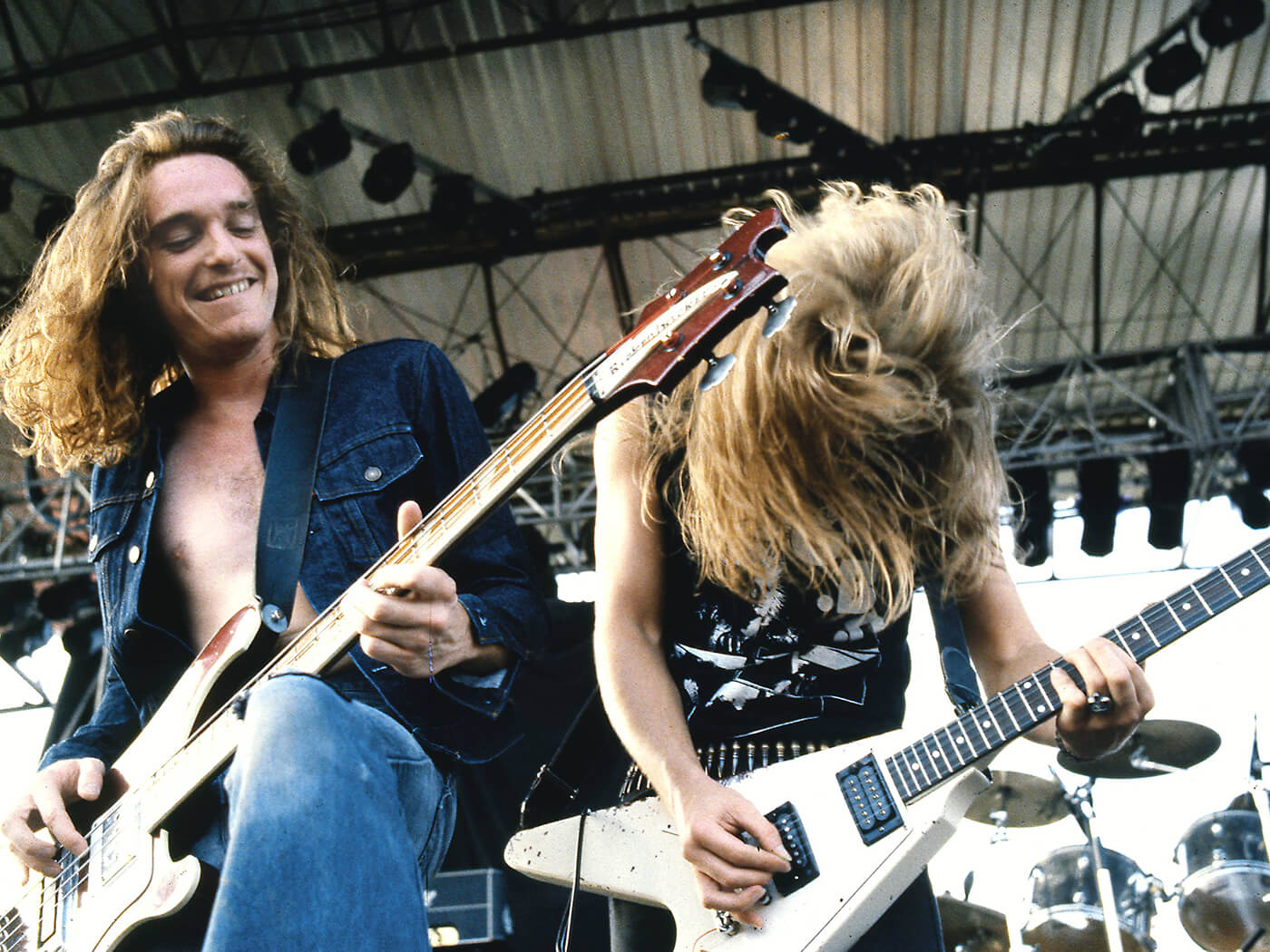Related Tags
5 Metallica gear facts only superfans will know
From amp mods to unexpected acoustic forays, here are five facts about Metallica’s gear that you probably didn’t know.

Metallica. Image: Mick Hutson / Redferns
Metallica have become much more than a mere band. They are a global brand, a club, and the proverbial bar by which other metal acts are judged. Much has been said about the band’s gear over the years: James Hetfield’s Explorer-style ESPs and Kirk Hammett’s ‘Ouija’ and ‘The Mummy’ M-IIs.
But much about Metallica’s more esoteric gear continues to go unexplored. Here, we get into the trenches and uncover some lesser-known facts about the band’s arsenal.
James Hetfield’s amp mods

For Metallica’s debut album, 1983’s Kill ’Em All, Hetfield used a Marshall Master Volume that had been modded by California amp guru Jose Arredondo.
Arredondo was famous for modding amps owned by the likes of Eddie Van Halen, Steve Vai, and George Lynch, gain-stacking them and often adding an extra preamp tube.
Hetfield’s modded Marshall was famously stolen – along with much of Metallica’s other gear – from the band’s van while outside a venue in Boston in 1984. The loss was devastating, both creatively and financially, and inspired Hetfield to write the classic track Fade to Black. “I’m sure I wasn’t really thinking of killing myself,” he said later, “but it was my favorite Marshall amp, man!”
Prior to the recording of the band’s next album, 1984’s Ride the Lightning, Hetfield bought a replacement: a brand-new Marshall JMP 2203 head. This amp would be modded by Ken Fischer of Trainwreck Amps, to allow him to bypass the preamp, but not until long after its purchase. For the recording of Ride…, Hetfield used an old Ibanez Tube Screamer to drive the JMP 2203 a little harder, trying to replicate what Arredondo’s mod had done for him.
During the recording of the Black Album, Bob Rock and Hetfield both got new Arredondo-modded Marshalls. According to Hetfield, Hammett also had one in the works but Arredondo passed away before it could be completed.
Kirk Hammett’s ‘Randall’ amps

While it’s true that Hammett played a superb-sounding amp that said ‘Randall’ on it, it was not actually designed by Don Randall. This amp was actually designed by Mike Fortin and was simply licensed by Randall Amplifiers for use by Hammett.
Randall had done this before – setting up licensing deals with boutique builders such as Egnater and selling the results as Randall amps – and explains why certain-era Randall amps are more sought-after than others. Hammett’s signature amp can be traced back to a Fortin Meathead.
In 2011, Fortin made four hand-built prototype amps under the Randall banner for Hammett, all based on his Fortin Meathead model. These prototype amps were built using more expensive components that one would find in a production-model Randall, though Hammett still uses his production-model signature amp too. This KH103 was essentially a three-channel tweaked variation on the Fortin Meathead.
In spite of the band using Fractal units on stage, they still use their ‘real’ amplifiers in the studio. According to Mike Fortin, the prototypes he built, as well as Hammett’s signature Randalls, are still in heavy rotation in the studio and provide the basis for the Fractal profiles the band use live.
Cliff Burton played acoustic guitar on record

In a Guitar World interview from 2016, Hammett confirmed that Cliff Burton recorded the acoustic intro to Fight Fire with Fire, the opening track on Ride the Lightning.
“That acoustic piece was Cliff’s. Cliff wrote that on a down-tuned acoustic guitar… He had a really good grasp of playing the guitar, and a good grasp of classical modulations. That intro was his piece. We heard it and stuck it onto Fight, and it worked fantastic. We knew that was going to be the opening track. There was no question about it.”
Japanese guitars

Metallica have long been the archetypal American metal band. But prior to their partnership with Gibson, the gear they used was often made elsewhere, generally in the Asian market.
The guitar that launched James Hetfield’s career – and remains part of his studio arsenal today – is a late 1970s Electra Flying Wedge Model 2236, a Flying V copy with a bolt-on neck. Kirk Hammett used a few Fernandes Stratocaster copies – an FST-135 that he nicknamed ‘Edna’, and a customized red 1985 FST-65 with a CS Style 22F. Meanwhile, Cliff Burton used an Aria Pro II. All of these instruments were manufactured in Japan. It’s possible that Hetfield’s Electra and Burton’s Aria were made in the same Matsumoku factory.
After a brief stint with Gibson, Hetfield left due to a soured business relationship with the company during the Henry Juszkiewicz years. Hammett soon followed suit, as both left for ESP. Hammett recently returned to Gibson, which is now under new (and better) leadership.
The Garage Days guitar
Many have heard about the custom builds that master luthier Ken Lawrence has made for Hetfield over the years. Most notable among them is the Garage Days guitar, or as Lawrence calls it, ‘Carl’.
This guitar was built for Hetfield using wood salvaged from the band’s old rehearsal garage, where they wrote the bulk of material for Ride… and 1986’s Master of Puppets. ‘Carl’ was the sixth build that Lawrence completed for Hetfield.
Due to the questionable state of the reclaimed wood from the garage, Honduran rosewood was inlaid beneath the guitar’s rustic top so that its bridge and tailpiece could anchor to something sturdy. The wiring-cavity cover featured custom engraved US quarters from the birth years of Hetfield, Hammett, Burton and Lars Ulrich. But perhaps the most striking detail is inlaid into the canvas of the African blackwood fretboard…
Ken Lawrence explains its symbolism. “The brilliant inlay design was the brainchild of Petar Milivojević,” Lawrences tells us. “He is an extremely talented artist from Serbia, who I’ve been working with for a few years. He is a huge Metallica/James fan who knows their history so well that he came back with this design in three days. I showed it to James and, no deliberation, no suggestions, no changes, just, ‘Damn, we’re good’.”
The fantastical inlay features Hetfield looming large and Hammett as ‘the Reaper’, in reference to his stage nickname. Ulrich is depicted holding a lighting staff, because he brings the thunder, while Burton is represented by the Orion constellation in the sky. The Golden Gate Bridge references the band’s San Francisco Bay roots, while the gravestones recall the Master of Puppets artwork.
For more features, click here.
